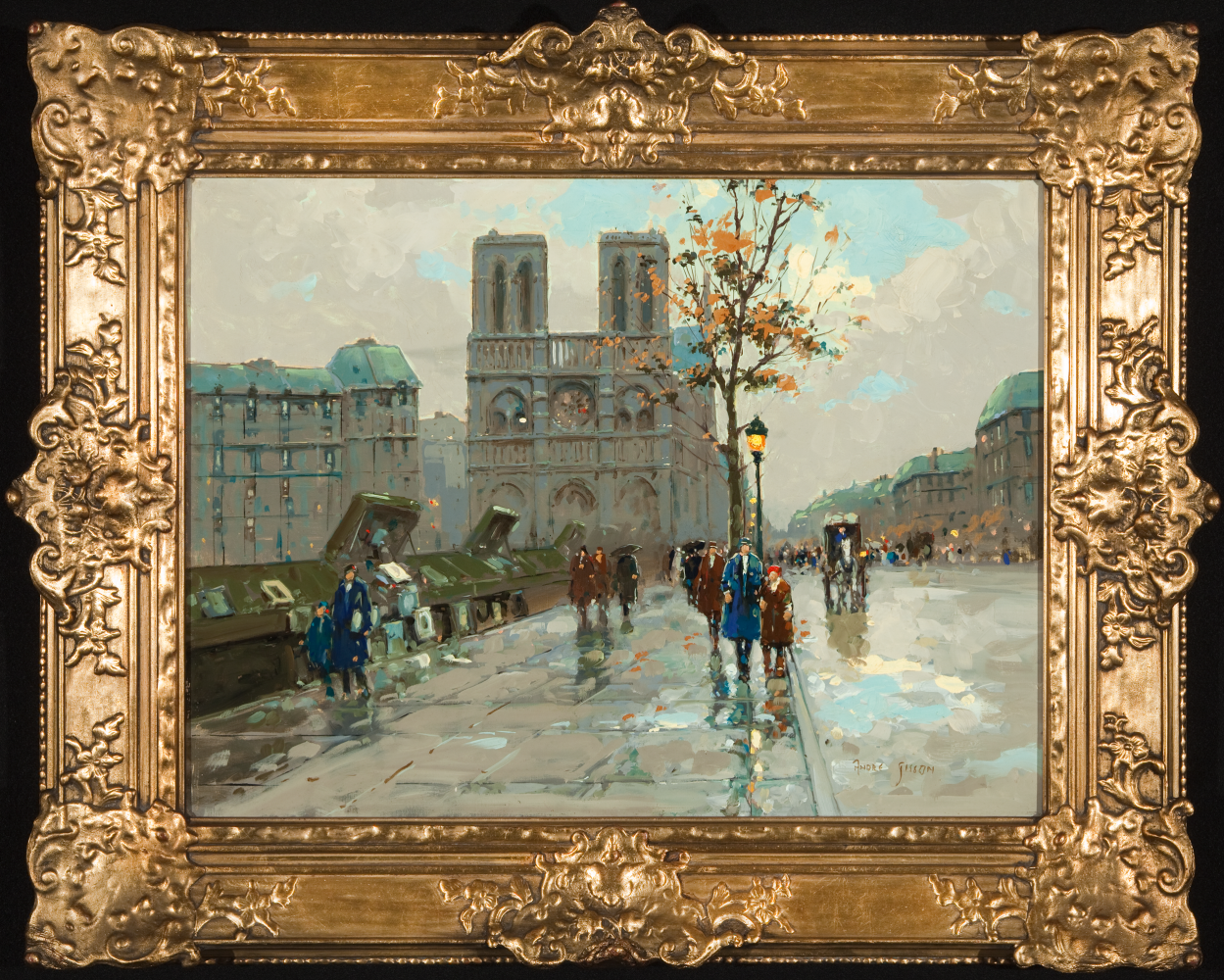André Gisson was born in Brooklyn, New York in 1929 as Anders Gittelson. Being born into a destitute family, Gisson soon realized that he would have a smaller chance at succeeding in his sector of choice, French Impressionism, with such meager means. Impressionism remained a bit elitist in the twentieth century in its employment of French painters, seeing as it was a genre that appealed to the upper classes. Additionally, older painters with more experience were inevitably more valued in terms of their artistic production. Consequently, Gisson officially legalized himself as Andre Gisson, a Frenchman born in 1910. He expressed a wish for the public to receive him as a distinguished member of the Parisian art world, being particularly learned in the field of Impressionism.
Gisson found himself to always be fascinated by the Impressionistic styling of such noteworthy men as Claude Monet (1840-1926), Edgar Degas (1834-1917), Camille Pissarro (1830-1903) and others. This relates back to his changing of his birth year, as he wished to be publicly associated with the Impressionist frontrunners. For a while, he concentrated his studies in Paris, submerging himself into the world these famous men has captured on canvas in the nineteenth century. He then took his knowledge with him back to the States where he set up shop in New York City. Gisson had previously studied at the famed Pratt Institute in New York City after being a Captain in the Army during WWII.
Feeling at home, Gisson spent the rest of his life in the Northeast, residing in Westport, Connecticut and traveling to New York intermittently, both of which provided artistic inspiration for him. He was truly active as an exhibiting artist for over forty years, showing in New York, Washington, Texas, California, London, Paris and Tokyo. He preferred to exhibit by himself, allowing his works an independent speaking voice.
He focused primarily on the study of landscapes, particularly beaches, with the occasional portrait. Although not natively French, Gisson’s works showcase a definite French influence, from its charming subject matter to its painterly brushwork. He highlights the main characteristics of the Impressionist movement in his works, maintaining small, loose brushstrokes that emphasize the vivid color palette used. The artist died in Atlanta in 2003 following a long illness.

